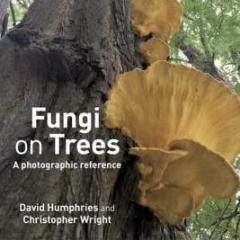hi I read it in Manual of wood decays in trees, K. Weber, C. Mattheck but this of cause does not mean its 100% rule.
also this is interesting reading:
Ganoderma on Trees - Differentiation of species and studies of invasiveness
F.W.M.R. Schwarze and D. Ferner
Diagnosis and differentiation
The perennial fruit bodies of G. applanatum have often been confused with those of G. adspersum, but the following characteristics can help to differentiate these species. If the lower surface of the fruit body bears the galls of the larvae of the mushroom fly Agathomyia wankowici, the fungus can be identified as G. applanatum, as it is the only European species of Ganoderma affected (BREITENBACH and KRÄNZLIN, 1986). However, the absence of these galls does not prove the converse, especially in regions where the fly does not occur. Another feature of the fruit bodies of G. applanatum is that they are usually thinner than those of G. adspersum (20 – 60 mm, compared with 40 – 100 mm) at the base. Also their undersides tend to emerge sharply at right angles from the host stem, whereas those of G. adspersum usually have a decurrent attachment. Moreover, G. applanatum has a thinner crust, which can be indented with a fingernail. With a hand lens, a difference in the pore structure can be seen in a radial section; in the older parts of the fruit body, the pores of G. applanatum, become filled with a white mycelium, whereas those of G. adspersum remain empty (BREITENBACH and KRÄNZLIN, 1986).
Microscopic features are also useful in distinguishing G. applanatum from G. adspersum. Its basidiospores are, on average, smaller (7 – 9 x 4.5 – 6.0 μm, compared with 8.5 – 12.0 x 6.5 – 8.0 μm) (BREITENBACH and KRÄNZLIN, 1986). Also, it has been reported by FERNER (2000) to produce broader hyphae at the growing margins of pure cultures on agar, having an average diameter of 3.50 μm, compared with 2.10 μm in G. adspersum (see Fig. 1A). As both spore size and hyphal diameter show overlap between individuals of the two species, another criterion, recently described by FERNER (2000), should be applied; i.e. the formation of thin hyphal strands at the margins of colonies of G. adspersum growing on cellophane overlying agar; this does not occur in the case of G. applanatum.
cheers steve





















